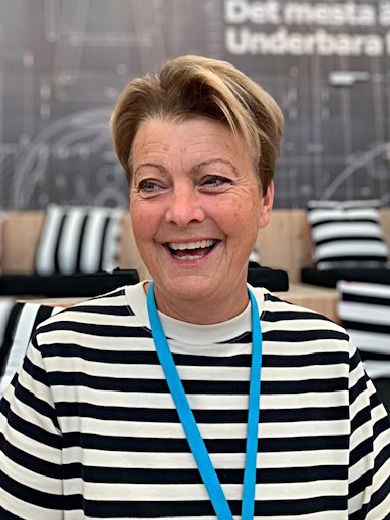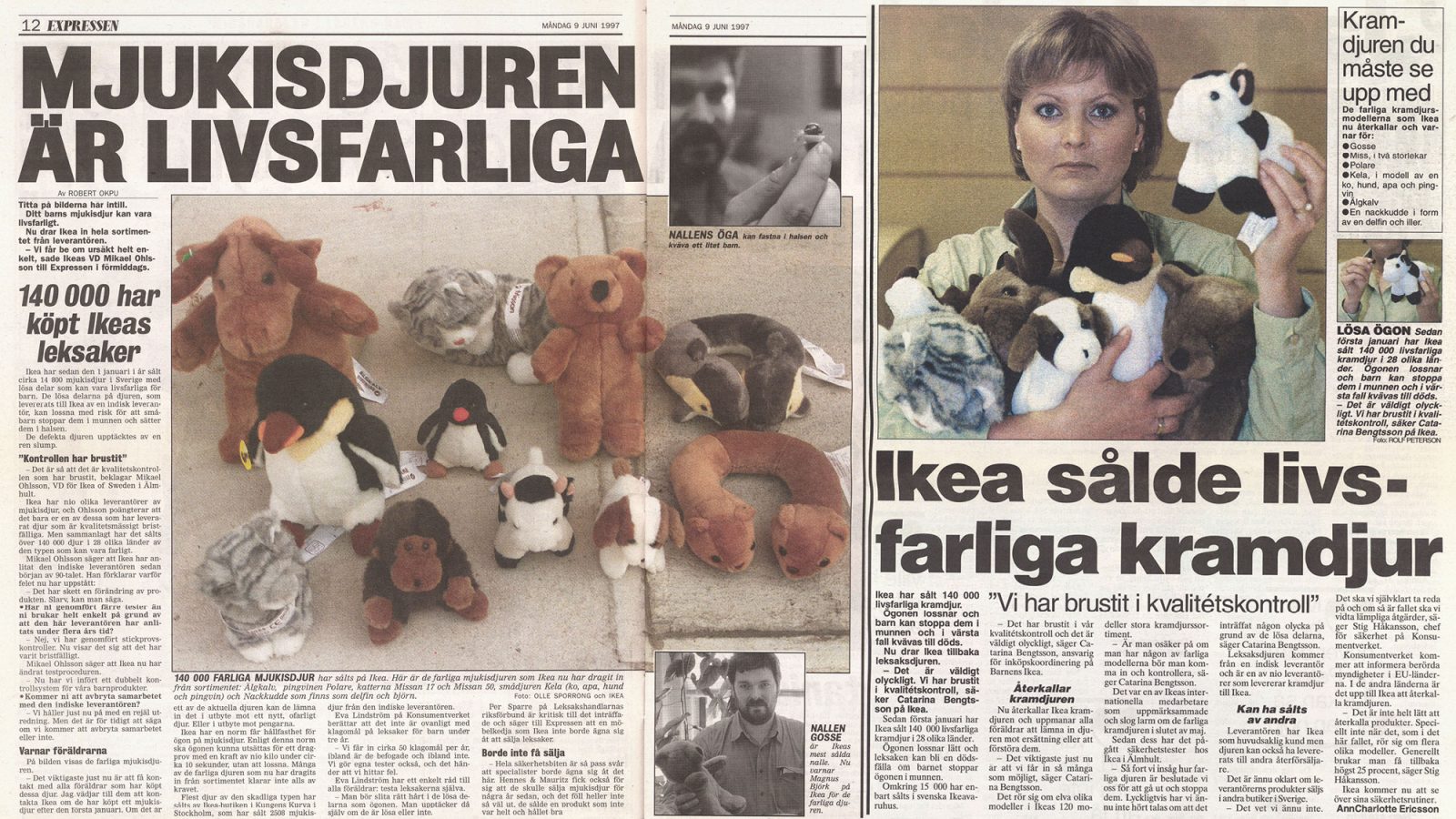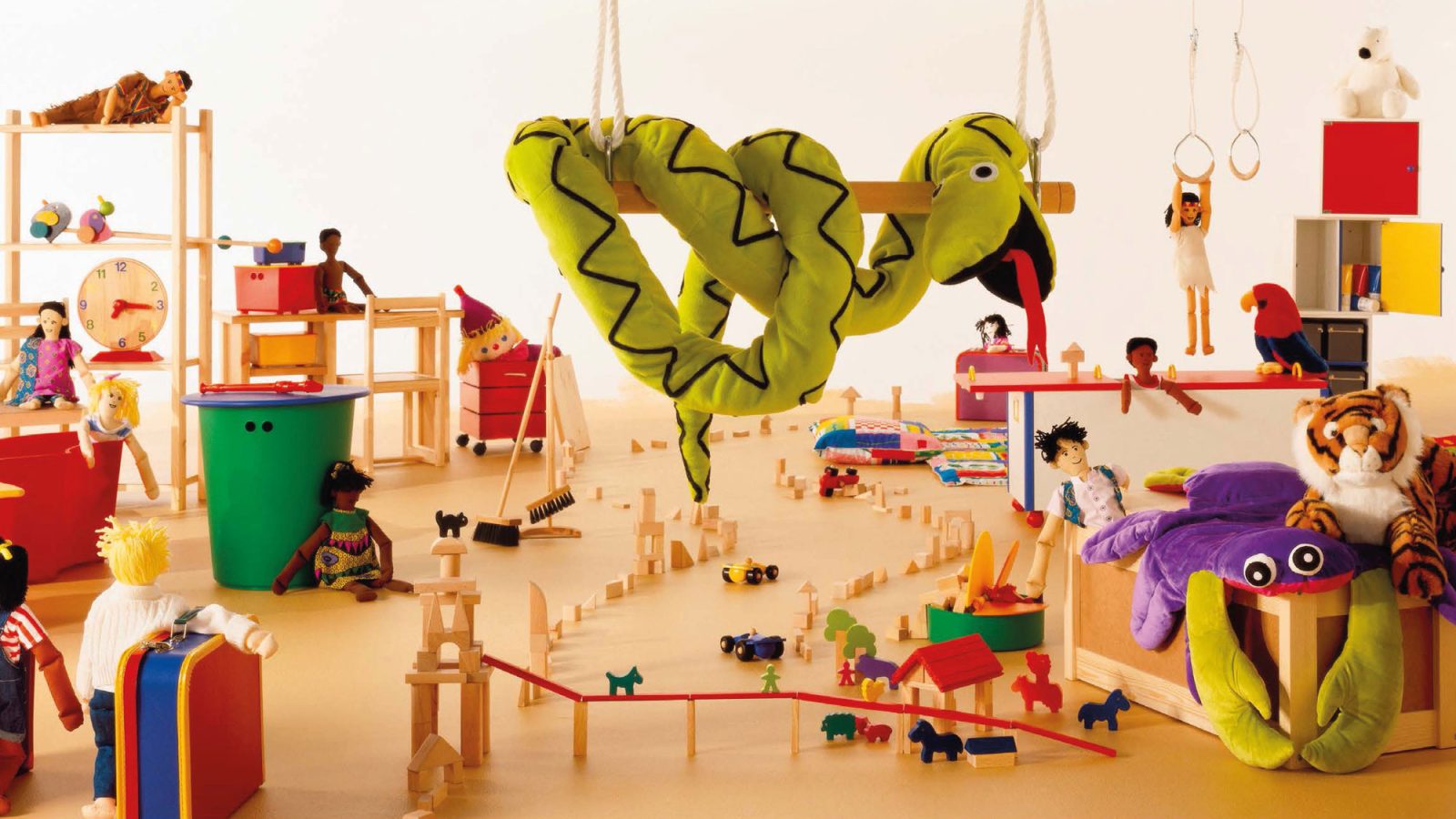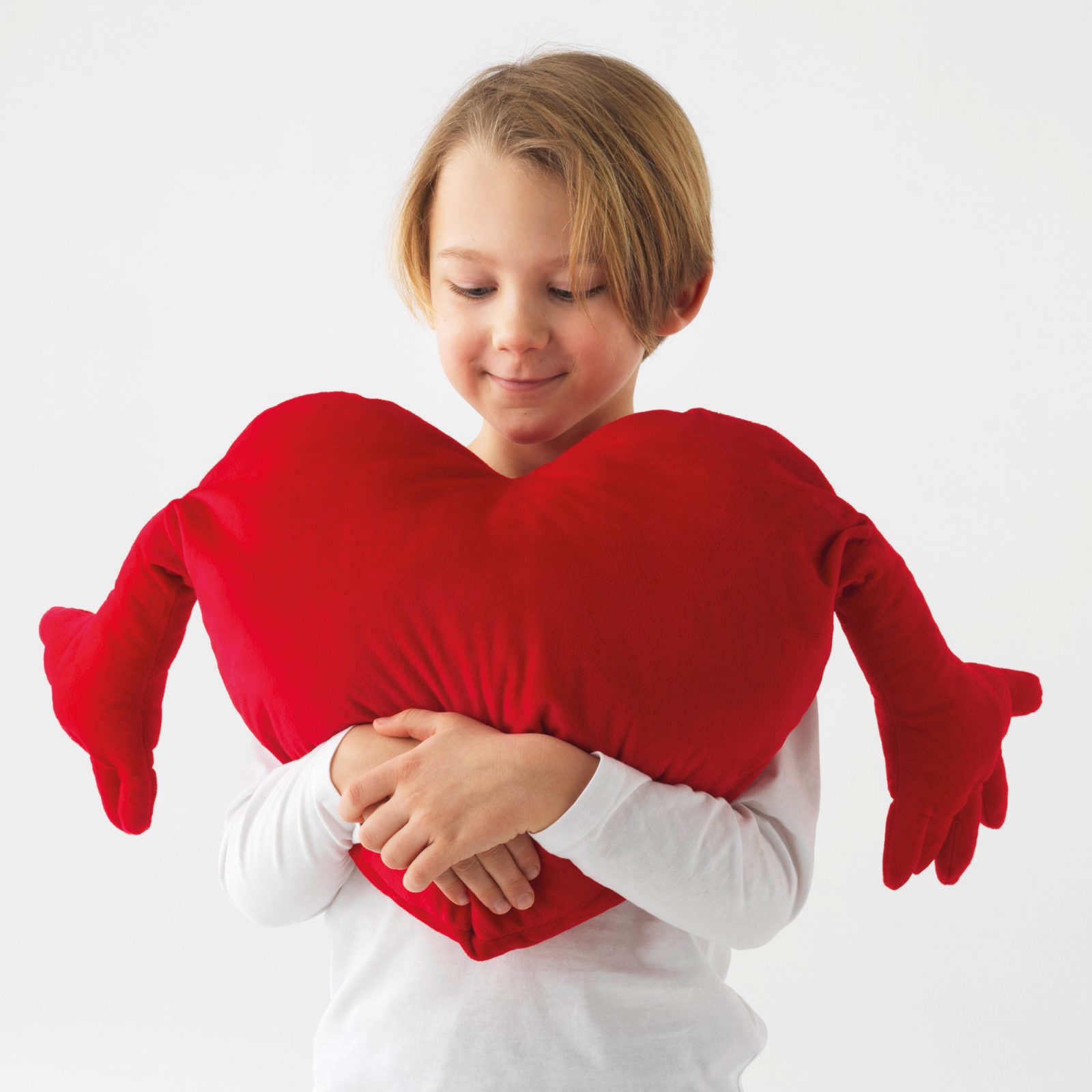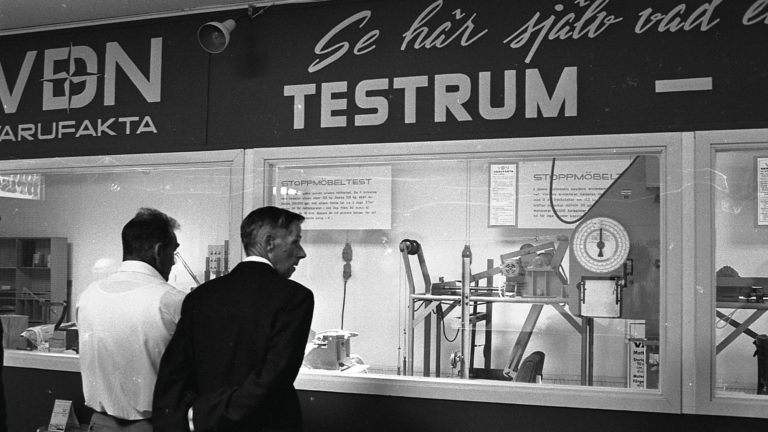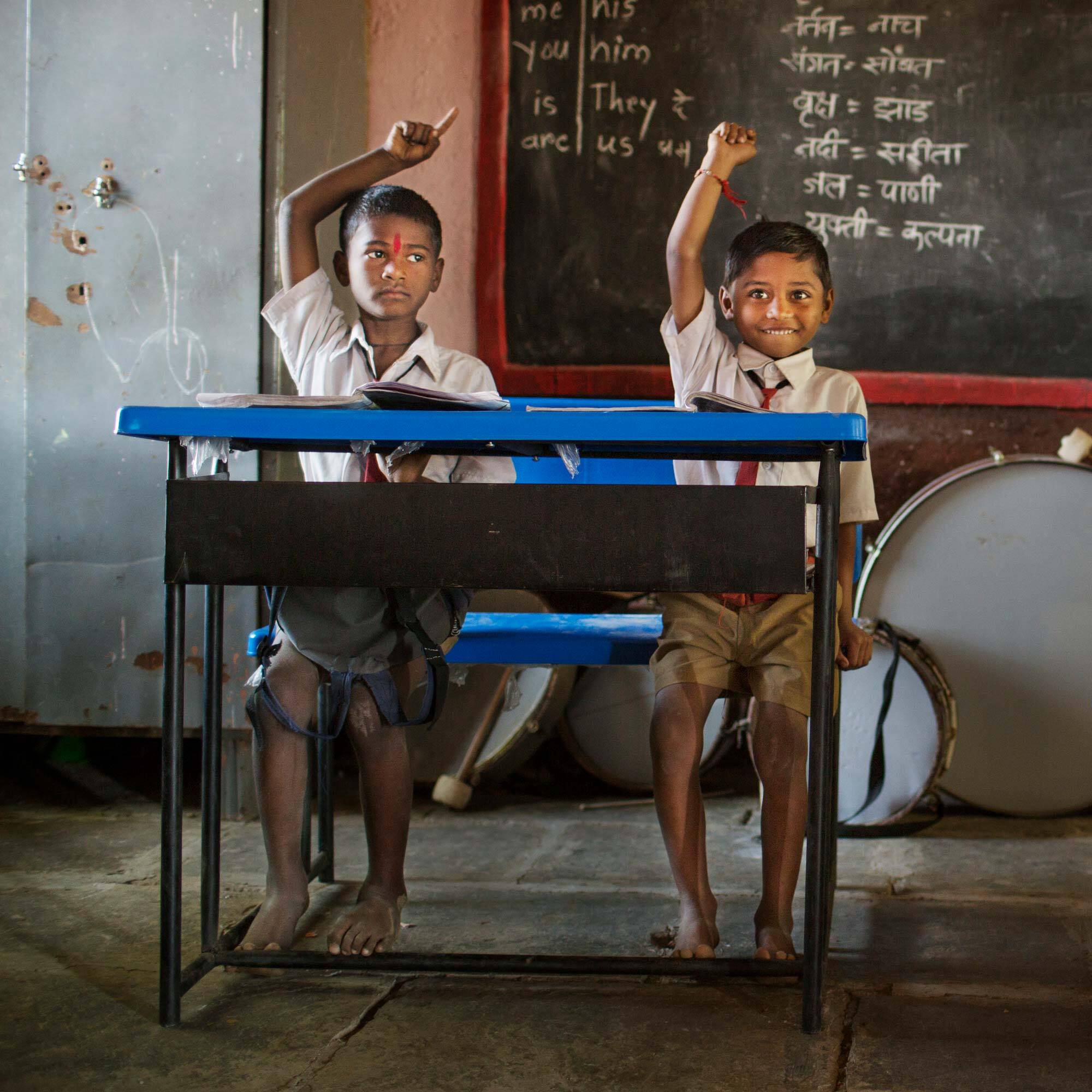It was Carina Ingelsten, an engineer and head of product development for soft toys, calling from a store in Finland. Just like Catti and others in their work group, the engineers used to visit stores in different countries before major events, like the upcoming opening of Children’s IKEA.
IKEA had already pre-launched some of the new soft toys in Helsinki, and they were now in big baskets inside the store. Carina spoke with a serious voice and said, “I have a GOSSE in my hand and an eye has come off!” “What?” Catti cried out, head of product development at Children’s IKEA at the time. “Put the phone down and give all the other eyes a pull.”

